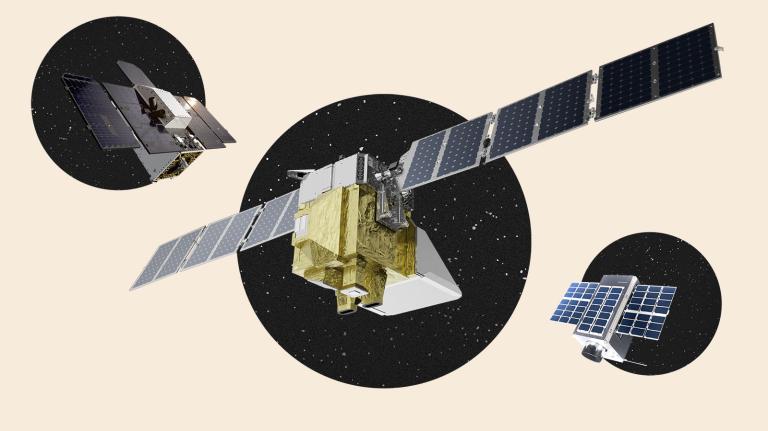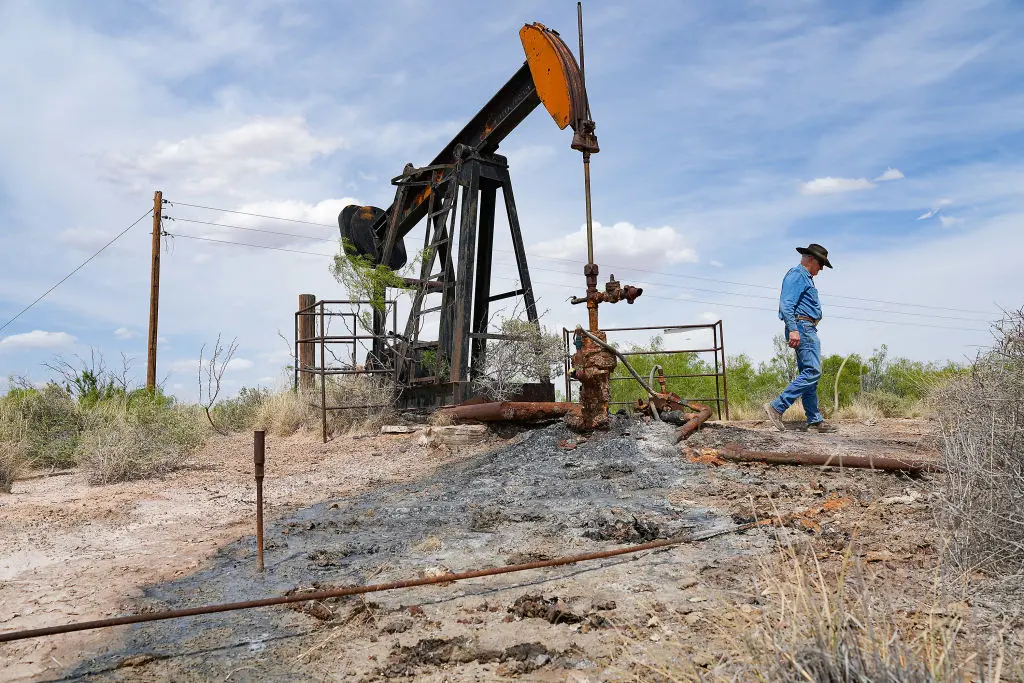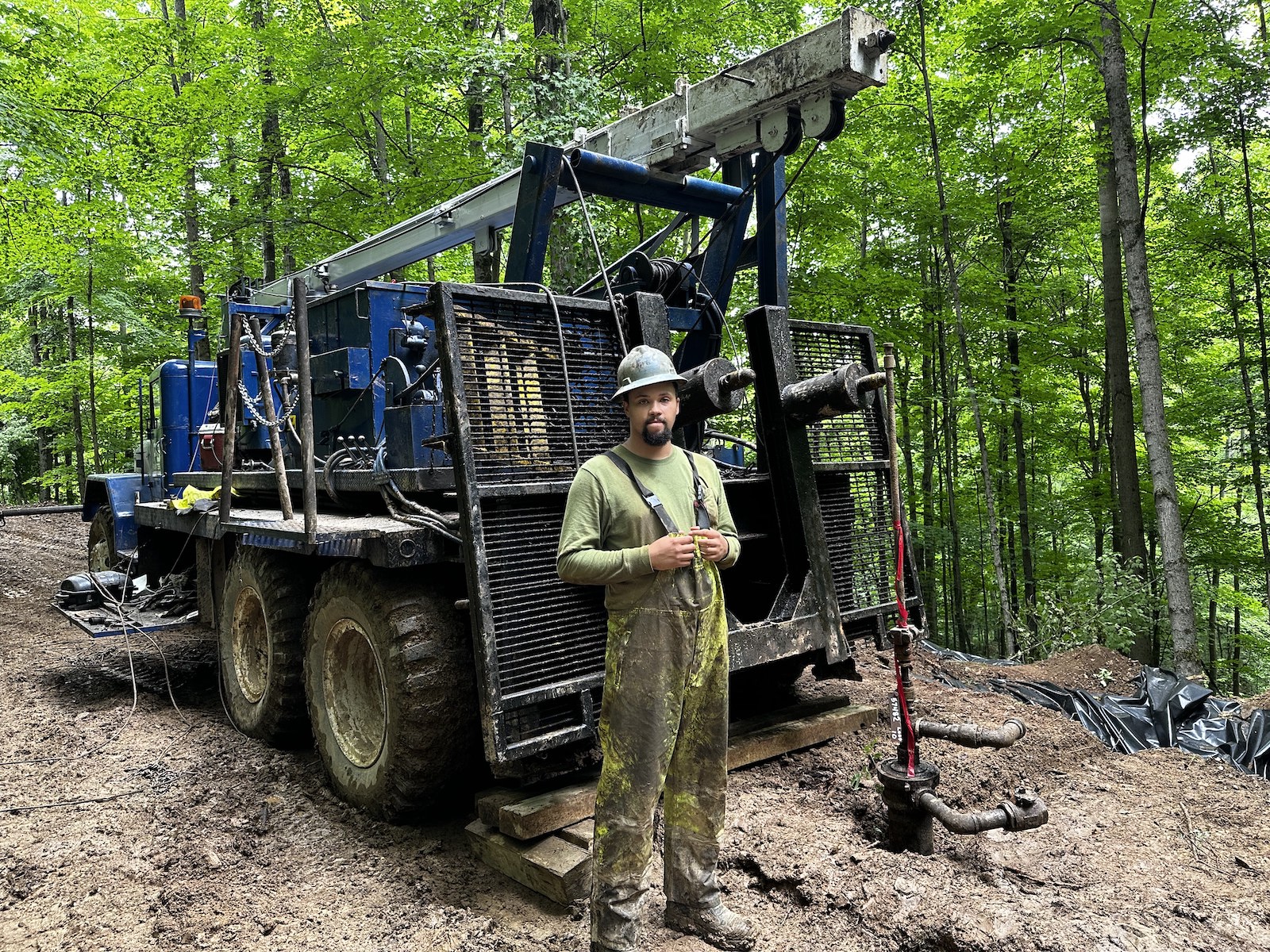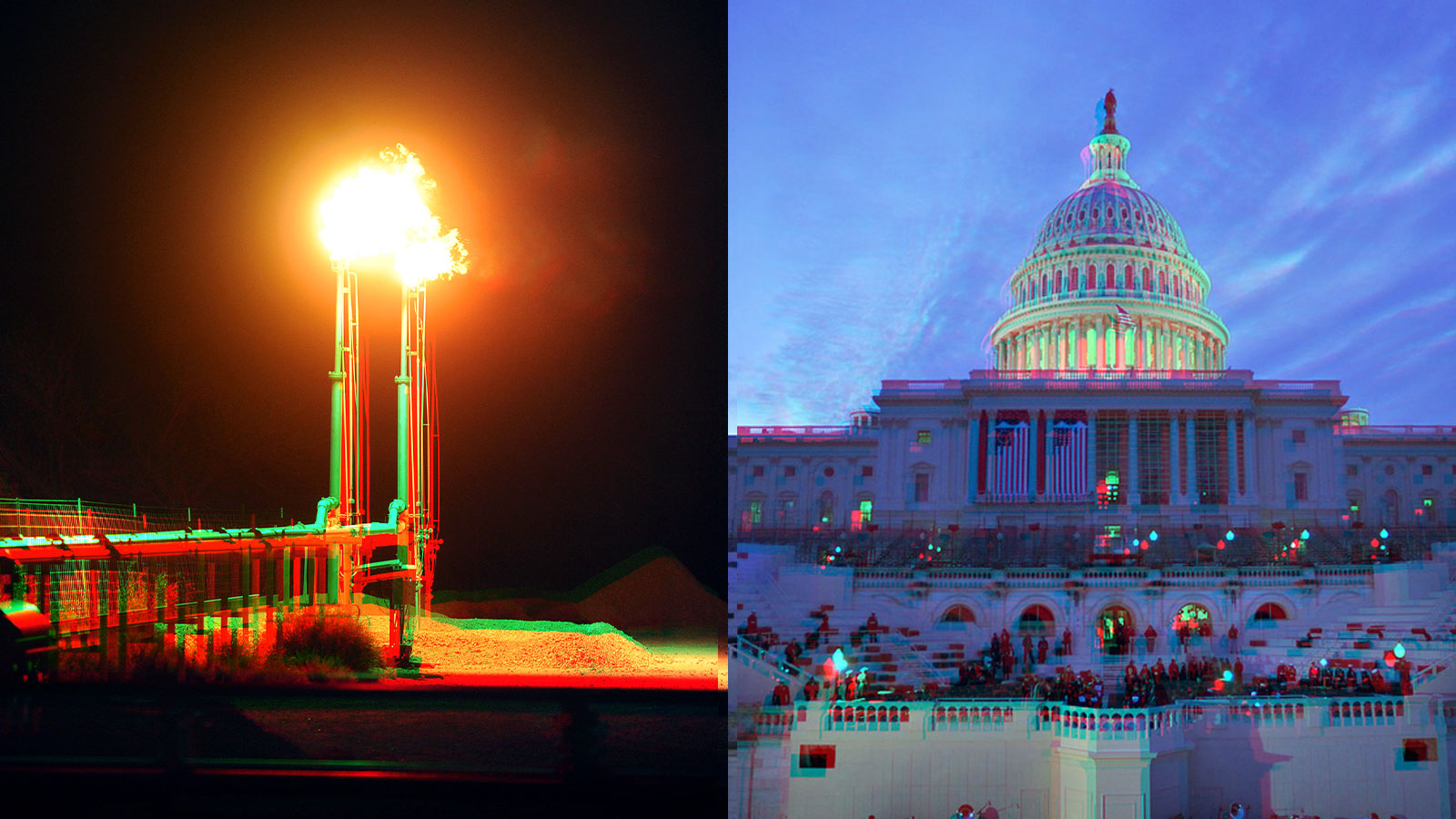An estimated 880,000 abandoned oil and gas wells dot the United States. These orphaned wells, some of which were deserted as long as a century ago, can leak toxic oil and gas into the groundwater and air. They also emit methane, the planet-warming primary component of natural gas. In 2021, Congress appropriated $4.7 billion to help clean up the mess by giving states the money they need to seal the wells and remediate their surroundings. Over the last two years, the federal Department of Interior has doled out nearly $1 billion of this total. As of March, more than 7,700 wells have been remediated as a result.
But with hundreds of thousands of orphaned wells still to go, the road ahead is rocky, in part because states are struggling to meet the Interior Department’s requirements for receiving the remaining funding. The federal agency awarded an initial $25 million each to roughly 30 states with few strings attached. To receive funding from the next tranche, however, the agency has required that states demonstrate that their remediation efforts meet standards outlined in the Endangered Species Act and the National Historic Preservation Act. As a result, state oil and gas departments, which have little to no experience navigating such requirements, are hiring additional staff and creating new procedures to ensure that, as they clean up thousands of decrepit and leaky oil wells across the nation, they also protect endangered species and cultural sites. The early results of these added requirements show that the pace of cleanup is slowing: Texas, for example, plugged 60 percent fewer wells during the first five months of receiving a recent round of federal funding compared to the period following an earlier grant that did not include these requirements.
“Each tranche seems to get a little harder, a little higher cost, a little more complexity, a greater burden,’” said Dennis Hatfield, Kentucky’s oil and gas division director. “We want to plug them all, but if they [federal officials] make it hard enough, states are going to struggle to meet that standard.”
It’s supposed to be oil and gas companies, rather than state officials like Hatfield, who are responsible for cleaning up well sites. But when companies go bankrupt or otherwise disappear, the responsibility falls to states, tribes, and the federal government. When Congress passed the Bipartisan Infrastructure Law, it included three rounds of grants to help clear the growing backlog of orphan wells. The initial grant of up to $25 million per state was intended to put plugging companies back to work at a time when oil prices were low and the industry was in free fall. Most states have already used that funding, and they’ve reported the amount of avoided methane emissions as a result. (In a report to Congress late last year, the Interior Department noted that regulators in California, Colorado, Louisiana, and New Mexico had plugged 328 of roughly 500 orphan wells that were emitting the equivalent of approximately 11,500 metric tons of carbon dioxide a year.)
The second tranche of money, which consists of so-called formula grants and makes up nearly half of the total $4.7 billion appropriated in the infrastructure law, comes with additional requirements. States are currently in the process of applying for and receiving funding from this second tranche. The final tranche, which consists of so-called performance grants that the Interior Department has not yet begun disbursing, are intended to incentivize state legislatures to provide matching funds for cleanup and encourage policy reforms to reduce orphan well burdens going forward.
“There was a slightly different goal with each bucket,” said Adam Peltz, a director and senior attorney at the nonprofit Environmental Defense Fund. “But a unifying goal was to facilitate the plugging of wells.”
Grist contacted oil and gas divisions in 10 state governments; spoke to regulators in Michigan, Kentucky, North Dakota, and New Mexico; and reviewed public comments submitted by states to understand how they’re navigating the Interior Department’s requirements for utilizing well-plugging funds. Many states have faced challenges in trying to comply with the requirements that the Interior Department has put in place as a condition for receiving formula grants, particularly the Endangered Species Act and the National Historic Preservation Act requirements.
The Interior Department is mandating that states conduct assessments of every well site where reclamation work is planned and submit lengthy reports confirming that the cleanup will not further imperil endangered species or damage cultural sites. That has meant hiring biologists to evaluate the reclamation plan for every one of potentially hundreds of well sites to determine if remediation work might have an adverse effect on an endangered species. States are also required to contact tribes that currently have a presence in the vicinity of well cleanup, as well as those with a historical connection to the region, in order to comply with the National Historic Preservation Act. The process has stumped state regulators who don’t have an easy way to identify the appropriate tribes or contact them.
There’s also the added irony that these preservation laws, which date back to the 1960s and 1970s, in many cases did nothing to protect these sites from drilling in the first place, but they are now standing in the way of returning the lands to something like their earlier conditions.
“There could be some Earth-moving going on, but it’s also the case that there was Earth-moving going on in the first place,” explained Peltz. “There’s questions of whether there could really be anything of historical value, given that these are already sites being returned to their previous state.”
States have spent recent months designing processes to meet these requirements. In Michigan, the state’s Oil, Gas, and Minerals Division is hiring an archaeological firm to help assess whether cleanups will disturb cultural sites. In North Dakota, which has wetlands that migratory fowl depend on, the state is putting together a plan to ensure that reclamation work doesn’t affect the whooping crane and other endangered species.
“We had some growing pains.”
— Dylan Fuge, deputy secretary of New Mexico’s Energy, Minerals and Natural Resources Department
“There’s a lot of unknowns due to the fact that we haven’t done it yet,” said David Tabor, a field supervisor with North Dakota’s Department of Mineral Resources. Tabor said that scheduling reclamation work was proving to be particularly “challenging” because of the state’s harsh winters and the fact that migratory fowl move through the state in the spring.
“We only have three to four months when we can actually do reclamation work,” he said.
Most state oil and gas departments have not had to navigate federal historic preservation and endangered species laws previously. Unlike state transportation departments, which oversee the construction of major roadways, environmental and minerals divisions regulate the oil and gas industry but have not managed the kind of major construction projects that typically require federal environmental clearance.
“There are going to be some lessons learned,” said Dylan Fuge, Deputy Secretary of New Mexico’s Energy, Minerals and Natural Resources Department. “We had some growing pains.”
Giovanni Rocco, a spokesperson for the Interior Department, said that it’s because of requirements written into the Bipartisan Infrastructure Law that activities “with the potential to affect historic properties” are subject to review under the National Historic Preservation Act. Similarly, a section of the Endangered Species Act requires that orphan well cleanups do not jeopardize endangered species or have an adverse effect on critical habitats.
Even as states navigate the requirements of the formula grants, they’re beginning to look ahead to the performance grants. Congress set aside $1.5 billion for two types of performance grants: matching grants and regulatory improvements grants. The former is intended to incentivize state legislatures to find additional funds for cleanup, and the latter is contingent on states improving their orphan well policies to prevent wells from becoming abandoned in the first place. Late last year, the Interior Department accepted public comments on how it should assess whether states will qualify for regulatory improvement grants. The law notes that states need to demonstrate that they either strengthened well-plugging standards or else introduced policy reforms that would reduce the number of wells that are likely to be orphaned in the future. But since the law doesn’t explicitly lay out how states should demonstrate compliance with those provisions, the Interior Department requested comments on how it should assess the effectiveness of the regulatory programs.
Across the board, states asked for flexibility. The Interstate Oil and Gas Compact Commission, or IOGCC, a quasi-governmental body created by Congress that represents oil- and gas-producing states, noted that the types of improvements that will best serve a state will vary depending on the geology, climate, and nature of oil and gas operations. Every state also has a different regulatory program, which makes a one-size-fits-all approach difficult to implement, according to the commenters.
“Nothing gives [the Interior Department] authority to dictate what improvements a state must make to qualify for a regulatory improvement grant,” the executive director of the IOGCC wrote in the public comments.
Rocco, the Interior Department spokesperson, said that guidance on regulatory improvement grants is “in development” and that “relevant lessons learned” from issuing formula grants will be taken into consideration.
In recent years, many states have passed laws or updated their rules to better regulate orphan wells. Oil and gas companies are required to post bonds to cover the cost of cleaning up wells in case they file for bankruptcy. But the bonding requirements have long been inadequate, and bonds in most states have covered just a small fraction of the cost of cleanup. Several states, including Colorado and California, have recently updated their bonding requirements as a result. States have also updated their policies on how long a well can remain idle without being plugged. Such provisions are expected to help limit the number of orphan wells that end up on state cleanup rosters.
But these improvements have only made a small dent in the orphan well problem. In public hearings, private meetings, and surveys, states have acknowledged the scale of the issue and their limited capabilities to tackle it. In a recent survey obtained by Documented, a watchdog group investigating the influence of money on politics, the IOGCC asked state regulators if wells being passed from compliant, well-funded companies to poor operators who might go on to abandon them was a problem in their states.
That problem often looks like this: Oil and gas wells are typically most productive when they’re first drilled. Over time, the amount of product that a company can extract diminishes. As profits from a well dwindle, companies often transfer such wells to smaller companies operating with tighter margins. When oil prices plummet or other economic shocks affect the market, these smaller companies are the first to file for bankruptcy, often abandoning their wells in the process.
In response to the IOGCC’s question on the matter, many states acknowledged the prevalence of the issue.
“We commonly enter into consent orders with the new operator before transferring wells,” the West Virginia regulator wrote. “Unfortunately, this is not extremely successful.”
The Michigan regulator noted that the issue is “difficult to prevent,” particularly if the smaller operator is in compliance with all state regulations prior to any well abandonment. “We do not see a solution to control that shift,” Kentucky’s regulator said of the same problem.
The responses suggest that orphan well counts are likely to continue growing despite the federal government’s initiatives. Most states that Grist spoke to said that, based on policy changes they’ve made in recent years, they are likely to qualify for the regulatory improvement grants. However, Tabor, the North Dakota field supervisor, said that his state did not plan to apply for the grant, in part because he didn’t believe they would have additional wells to plug and in part because of the challenges of meeting the federal government’s requirements.
“The money and man power being spent just to meet the requirements is making it to where we feel our state methods, rules, regulations, and funding is the more appropriate way to go,” he said.
Ultimately, if some states don’t claim their share of the funding, the Interior Department may route the money to states in need that prove they meet the requirements. “After all, the demand for well-plugging dollars is essentially infinite,” said Peltz.






